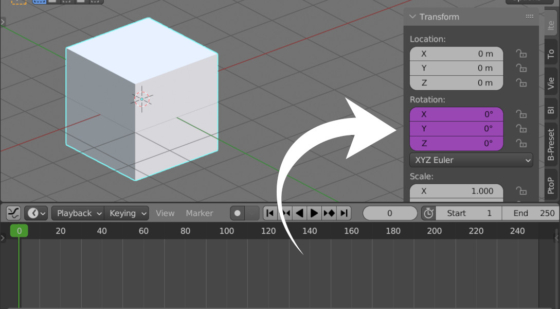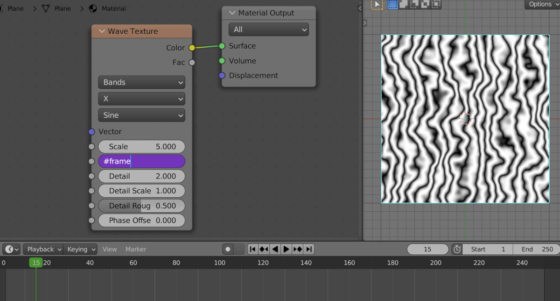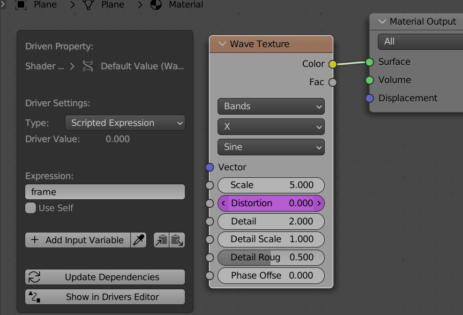To quickly associate any variable mesh parameter with animation frames, we just need to type #frame in the parameter field. Then, when scrolling the animation timeline, the value of this parameter will be equal to the current frame number.
Add a Plane to the scene (shift + a – Mesh – Plane).
In the N-Panel of the 3D Viewport area, in the “Rotation” section, click on the “Z” parameter. Instead of a simple value, type #frame and press Enter.
Now, the mesh rotation around the Z axis is associated with animation frames. On the first frame, the rotation will be 1 radian (57.3 degrees), on the second frame it will be 2 radians (114.6 degrees), and so on.
By moving the cursor along the timeline, we can visually observe how the rotation of the mesh around the Z axis changes.
In the same way, we can bind any material node parameter to animation frames, which gives us an ability of creating animated procedural textures.
Let’s add a new material to our plane. Instead of the “Principled BSDF” node, let’s put a “Wave Texture” node (shift + s – Texture – Wave Texture).
Click on the “Distortion” parameter of the “Wave Texture” node and type #frame.
Now the strength of the distortion is tied to the frames of the animation and increases with each frame.
This way we can animate any parameter of any node.
We can link parameters with animation frames in Geometry Nodes too. However, Geometry Nodes has a separate “Scene Time” node (shift + a – Input – Scene Time), which has two outputs “Frame” and “Seconds” from which we can get the current frame and current animation time.
In fact, when we set #frame instead of a value in any parameter field, Blender automatically creates a driver that actually links this parameter with the current animation frame on the timeline. This can be verified by right-clicking on the parameter field (after setting #frame) and selecting “Edit Driver”:
However, the driver creating process takes place in Blender “under the hood”, which allows us not to focus on driver management, but simply and quickly associate the desired values with animation frames.

 .blend file on Patreon
.blend file on Patreon

